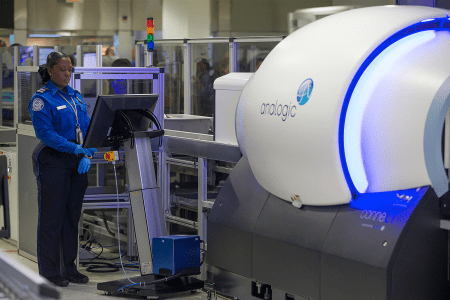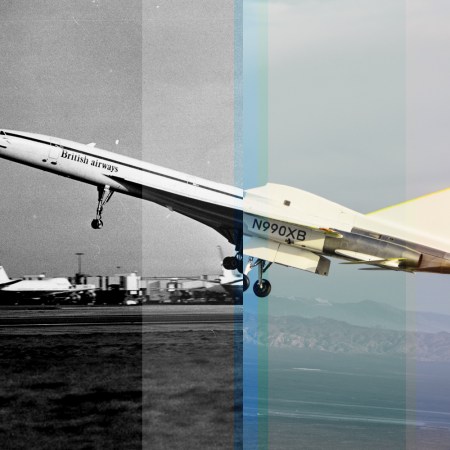I can recognize that there are a great many people who don’t travel often. That is to say, that airport navigation — and, more specifically, airport security navigation — isn’t second nature to everyone. Logically, I do know this! However, the year is (almost) 2024 and for the last two decades, this much has been true: you cannot wear shoes through checkpoints, you cannot bring fluids above 3.4 fl. oz. through checkpoints, your laptop must be taken out of your bag, your jacket must be off and your pockets must be empty. And yet — and yet! — invariably, you always wind up in line behind someone who’s chosen today, of all days, to wear their Doc Martens and who’s stashed their laptop into some deep, dark, seemingly irretrievable corner of their carry-on.
Fortunately, TSA PreCheck has allowed me — and 17.6 million other travelers — to circumvent this exact predicament more times than I can even count. It’s the best $78 I’ve ever spent. Further, to sweeten the pot even more, select travelers will be able to screen themselves at airport security checkpoints starting in the New Year. And so help me if I’m not “select travelers!”
Per a new report from Condé Nast Traveler, TSA is gearing up to launch a “trial run of new ‘self-service’ screening technology” at the Las Vegas Harry Reid International Airport next month. In the name of efficiency and decreased wait times, PreCheck members will be allowed to conduct their own body scans. The project is being called “Screening at Speed.”
Why the Hell Are We Still Taking Liquids Out of Our Carry-Ons?
New CT technology can literally take a 3D image of your bag…so what’s the deal?“Like self-ordering kiosks at fast food and sit-down restaurants, self-service screening allows passengers in the Trusted Traveler Program to complete the security screening process on their own,” Program Manager Dr. John Fortune said in a statement. “Travelers will use passenger and carry-on screening systems at individual consoles or screening lanes themselves, reducing the number of pat-downs and bag inspections transportation security officers (TSOs) need to perform and freeing their time to be reallocated to the busier aspects of screening operations. The feedback we’ve already received during testing from both mock passengers and TSOs has been incredibly positive.”
Here’s how works: there will be four integrated stations for one checkpoint lane. Each station will have its own scanning portal with automated entry and exit doors. Once the passenger steps into the scanning portal, and the doors close, they will be presented with a series of prompts (E.g. how to stand) at which point they’ll undergo a millimeter wave scan. If the passenger fails the screening, a video screen will highlight the problem area like, say, a belt buckle (amateur). The passenger will then be allowed to exit through the entry doors to dispose of said belt buckle and try again. Only once they’ve successfully passed the screening will the exit doors open.
“We are very excited to see how far these capabilities have come in a relatively short amount of time,” said Christina Peach, Branch Manager for the TSA ITF. “The airport security experience that we’ve all come to know could soon look and feel a lot different — in a very good way — for both passengers and TSOs.”
All of that said…none of this does much good for the 115 million Americans (a 2.2% increase compared with 2022 and the second-highest since 2000, according to AAA) traveling this week. Or for any of the TSOs across the rest of the continental U.S., for that matter. But assuming the trial goes well? Next year we’ll be cookin’ with gas.
Thanks for reading InsideHook. Sign up for our daily newsletter and be in the know.



















